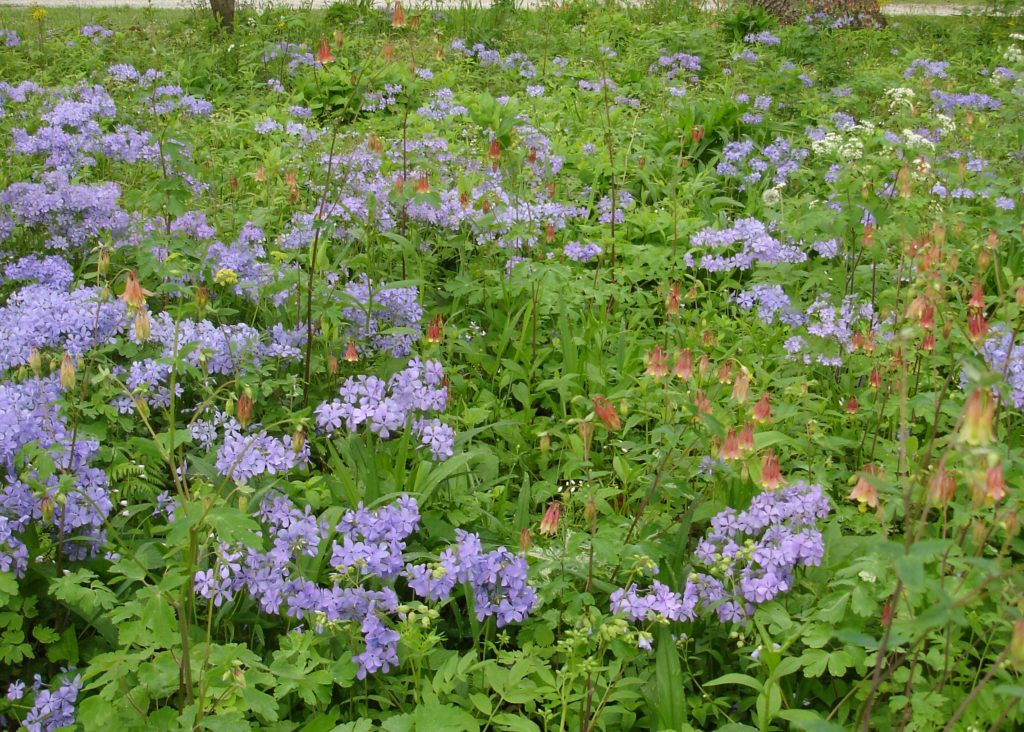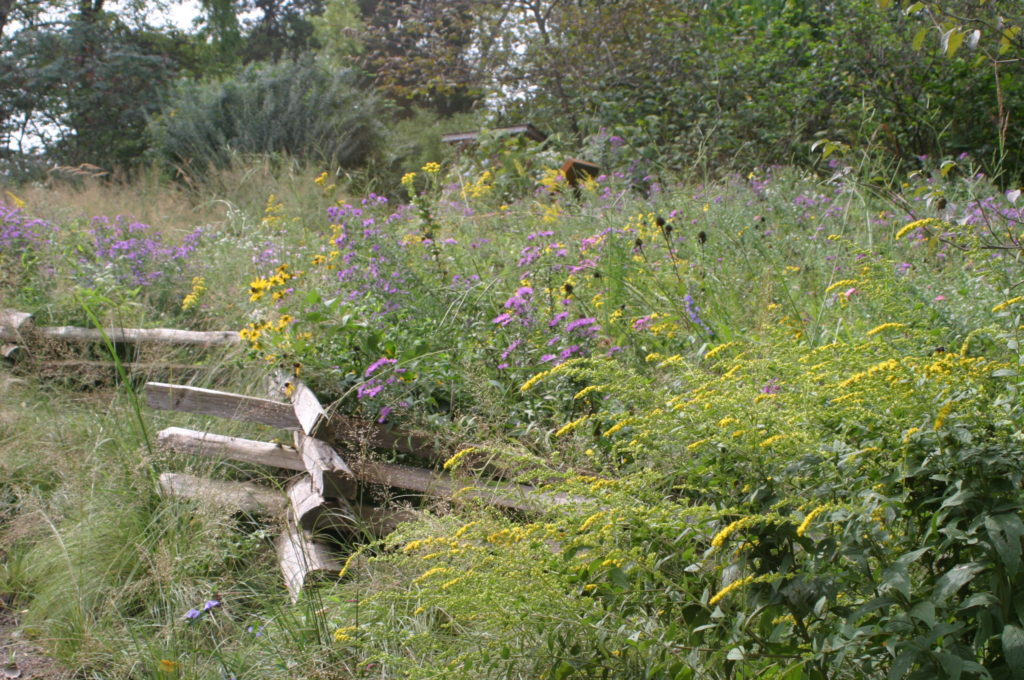To Mulch or Not to Mulch: The Benefits of Designed Plant Communities
Old-school gardeners mulch planting beds every year. One to two inches is applied for perennials and grasses and 2-3 inches for trees and shrubs. Ground leaf mulch or shredded hardwood mulch goes down before the end of March to deter the inevitable onslaught of weeds in April. Mulch also shades the soil, cooling it and keeping it moist. Plants are spaced wide apart with a border of mulch between each, keeping gardens tidy and cared for. You’ve probably seen examples of this at shopping centers, restaurants and at home. This is a common style of gardening.

New-school gardeners like Claudia West and Thomas Rainer, co-authors of Planting in a Post-Wild World and Larry Weaner, author of Garden Revolution, have figured out a way to garden without mulch. All three are landscape architects who tinker with plant combinations and spacing to create designed plant communities. To be clear, they are creating gardens, not natural ecosystems, which are two very different things. Wild plant communities are long-established ecosystems where geology, soils, micro-organisms, fungi, insects, mammals, reptiles, birds, and plants exist as a cohesive whole. Here, plants exist only a few inches apart. A dozen or more plant species can exist in a one-square-meter of tallgrass prairie and share the space with 15 beetle species, 14 bees, 21 flies and many other species of butterfly, moth, spider, bug, ant, aphid, grasshopper, mite, and katydid according to Chris Helzer, a prairie ecologist for The Nature Conservancy in Nebraska. (In summer 2018, the Missouri Prairie Foundation’s original Penn-Sylvania Prairie was found to have 46 native plant species in a ¼-meter square quadrat, demonstrating the extreme plant diversity in many original prairies.)

This is nature at its best with high species diversity. On the other hand, in a designed plant community, living diversity is much lower although the intention is to attain as much diversity as possible. Like a natural community, designed communities have close plant spacing, about 6-12 inches compared to a traditional arrangement where spacing is about two feet apart. With plants growing so closely together, weed spread is reduced, especially after plants fully mature. This takes about one to two years on average, depending on the species and spacing. The closer the spacing, the quicker the grow-in and the quicker weeds are crowded out. When the ground is completely covered over with plants, there is no longer a need for mulch. Also, plants shade the soil, which assists with maintaining soil moisture.

Another new-school gardener is Mervin Wallace, owner of Missouri Wildflowers Nursery. He recently told me that there are two common prairie plants that grow very low in tallgrass prairies and assist with covering the ground like a mulch: wild strawberry (Fragaria virginiana) and field pussytoes (Antennaria neglecta). These one-to-three inch tall species grow between taller prairie plants like a weave in a carpet. For such tiny plants, they take up a lot of real estate per square meter of prairie. They bloom and grow in spring when sunlight is plentiful and later are shaded as taller prairie plants grow over them. They do what mulch does in a traditional garden and can be useful species in designed plant communities. They cool and maintain soil moisture and prevent weeds from getting established.

Self-mulching or designed plant communities are like self-driving cars: they are unbelievable at first glance. From what I’ve observed in the Whitmire Wildflower Garden at Shaw Nature Reserve, they both increase living diversity while decreasing maintenance. They aren’t maintenance-free by any means, but take half as much time to maintain compared to a traditional landscape. For large-scale landscapes, time management is critical. I’ve seen too many gardens fail because they were too big to care for. As a society, we either need to begin to fully realize the cost of traditional landscape maintenance or use smarter designed plant communities to leverage ever-shrinking resources.
Thomas Rainer will be one of two keynote speakers at the Grow Native! workshop in Edwardsville, IL on March 22, 2019. Visit www.grownative.org to register. Larry Weaner will be the keynote speaker at the Partners for Native Landscaping workshop on March 29-30, 2019, held at the Donald Danforth Plant Science Center in St. Louis. Audubon St. Louis will be taking reservations through mid-March.
Horticulturist Scott Woodbury is the Curator of the Whitmire Wildflower Garden at Shaw Nature Reserve in Gray Summit, MO, where he has worked with native plant propagation, design, and education for 27 years. He also is an advisor to the Missouri Prairie Foundation’s Grow Native! program. Find suppliers of native plants and other native plant resources, including landcare professionals, at www.grownative.org, Resource Guide.
All photos by Scott Woodbury.
